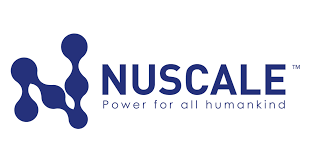Nuclear Reactors 756 - Energy Impact Center Is Launched To Provide Open-Source Designs For Small Modular Reactors - Part 2 of 2 Parts
Part 2 of 2 Parts (Please read Part 1 first)
Kugelmass is not the only entrepreneur who is certain that reducing reactors is the best way to renew interest in the expansion of nuclear power. SMRs are being researched and developed by several different companies. NuScale in the U.S. is almost ready to deploy its first SMR plant. Rolls-Royce in the U.K. is seeking a site for their SMR plant. Both the Chinese and the Russian governments are dedicating significant resources to the development and testing of SMR designs.
There are many unresolved questions and serious challenges to the development, licensing, construction and deployment of SMRs. In view of the fact that serious cost overruns and extended schedules are common in the nuclear power industry, any suggestion that it will be easy to decrease the cost and time necessary to deploy an SMR must be viewed skeptically. The current OPEN100’s blueprints are only 3D shells of components including reactor vessels and turbines. The blueprints do not contain any information about how the components are connected or how they are intended to operate. The website of EIC says that they will be providing more detailed models and construction information in coming months.
Many experts are skeptical that the transformative shift to SMRs will be as great as proponents claim. The critics say that SMRs will be challenged with the same cost and safety concerns as the standard light water reactors in use today.
Kugelmass is very enthusiastic about the increased safety that SMRs will offer. He points to the low number of casualties associated with the Fukushima meltdowns in 2011 to reinforce his contention that nuclear power plants are no more inclined to serious accidents than other industrial plants and consequences are mild.
However, concerns about the safety of commercial power reactors is not confined to worries about meltdowns. All commercial nuclear power plants today generate large quantities of long-lived radioactive waste the disposal of which has no universal solution. Regardless of what the facts may be with respect to the safety of nuclear power, there is wide-spread concern among the public. Politicians, investors and the general public are not convinced that nuclear power is safe and the best answer to fighting climate change.
The costs associated with the deployment and operation of renewable energy sources is falling rapidly. In addition, utility-scale energy storage systems are beginning to provide solutions to the intermittency problems associated with wind and solar power systems. The fact is that if these trends continue, they will reduce the justification for making major investments in new nuclear technology. However, some studies have concluded that even if solar and wind intermittency are solved by improving battery storage capacity and lowering battery costs, wind and solar alone will not provide sufficient low-carbon electricity generation necessary to meet future energy demands.
Kugelmass is not persuaded to give up his quest for SMRs by these problems. In addition to the launch of EIC, he has also started a for-profit spin-off from EIC called Last Energy. The purpose of Last Call will be to connect private investors with new opportunities to be involved in nuclear projects around the world.
